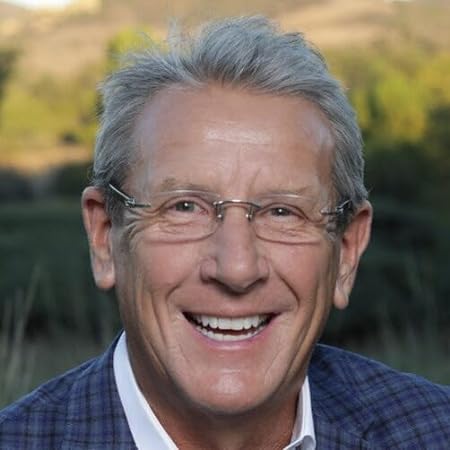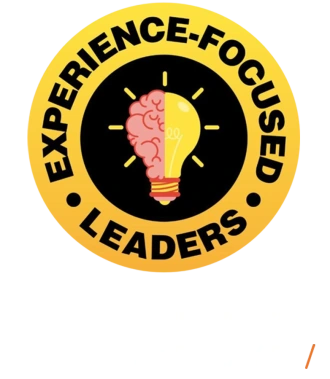Listen to the Podcast Episode on Your Favorite Platform

.svg.png)

From "Funnelholic" to "Go Big or Go Home": A Deep Dive into B2B Content Evolution
.png)
Marketo, Eloqua and HubSpot teams made a customer conference as big as possible, following the Dreamforce playbook. But I think the thing back then that we could take to now was “go big or go home” content. That was not “let's test”. That was not “let's do a little bit here or there and see how it works”. That was like, “No, we're going for broke and we're going to have the best conference!” (Craig Rosenberg)
(00:00-07:55)
Craig Rosenberg recounts his early days in thought leadership, beginning around 2008 when marketing automation platforms like Marketo, Eloqua, and HubSpot were on the rise. He talks about his venture into blogging with "Funnelholic," which led to speaking engagements and webinars, positioning him as a thought leader almost by accident. This period marked the beginning of content being used strategically by companies to establish themselves as leaders in their field.
Craig Rosenberg and Alex Shevelenko discuss how companies like Marketo and Eloqua leveraged content to compete. They didn't just produce content; they created substantial, high-quality material that stood out. This era was characterized by a "go big or go home" mentality, where companies invested heavily in their content strategies to dominate their market.
Fast forward to the present, Craig Rosenberg highlights that while the tools and platforms have evolved, the core strategy remains relevant: producing significant, impactful content. In a world saturated with information, Craig emphasizes the need for depth and substance in content to cut through the noise. He warns against relying on generic, formulaic content and stresses the importance of originality and quality.
The speakers also touch on the modern challenges of content creation, including the rise of AI-generated content. They stress the importance of maintaining authenticity and trustworthiness, suggesting that combining traditional, in-depth content with modern formats can help engage today's busy audiences.
.png)
Crafting Killer Content: Craig Rosenberg's Guide to B2B Success
.png)
There were a lot of reasons TOPO worked. One of them was Scott Alba who was the founder of Tippett as well. We founded TOPO together and he had this thing which was from the get-go. We had a motto which was “specificity wins”, and he said that's how we're going to differentiate. (Craig Rosenberg)
(07:55-16:33)
Craig Rosenberg emphasizes the importance of delivering substantial, actionable content. He recalls the founding principle of TOPO, "specificity wins," which focused on providing detailed, practical insights rather than vague tips. This approach made their content valuable and set them apart in the industry.
In a world where generic advice is easily accessible, Craig Rosenberg argues that specificity is a key differentiator. While general tips can be found everywhere, providing precise, actionable information on niche topics can make your content stand out. This strategy is crucial in capturing the attention of a target audience looking for in-depth knowledge.
Craig Rosenberg highlights the importance of adapting content formats to meet diverse audience preferences. From webinars to white papers, videos, and visually appealing experiences, offering a variety of formats ensures that different learning styles and preferences are catered to. This approach not only enhances engagement but also broadens the reach of your content.
Craig Rosenberg points out that LinkedIn is currently a powerful platform for content distribution. Founders and companies with minimal marketing budgets can leverage LinkedIn to build substantial followings and drive traffic to their websites. Consistent, high-quality content on LinkedIn can significantly boost visibility and credibility.
In today's content-saturated world, it's crucial to focus on areas with the most significant opportunities and changes. Craig advises concentrating on topics where your target audience seeks more information and faces the biggest challenges. By addressing these areas with specific, trustworthy content, you can effectively cut through the noise.
The speakers agree on the importance of experimenting with different content formats. Since audience preferences can vary widely, offering multiple formats for the same content piece ensures that you cater to various tastes and consumption habits. This strategy not only enhances engagement but also maximizes the impact of your content.
.png)

Craig Rosenberg on Trusted Content and Engagement
(16:33-26:03)
Craig Rosenberg discusses the enduring importance of specificity and relevance in content. He emphasizes that while shorter, high-level tips are prevalent, they often lack the depth required to build trust. Specific, detailed content, although more challenging to produce, provides the value that audiences seek.
Craig Rosenberg explains why traditional content formats, like PDFs and PowerPoint presentations, continue to persist. These formats offer a sense of permanence and trustworthiness. However, he also highlights the need for visually appealing and engaging digital content that can cater to different consumption habits. Craig Rosenberg points out that dense, information-rich content still holds value, especially in research-driven fields.
In today's fast-paced world, people often seek quick, easily digestible content. Craig suggests that content creators should focus on providing substance while also considering various form factors to engage a broader audience. For example, a detailed PDF might coexist with a short, engaging video or an interactive online hub to cater to different preferences.
Craig Rosenberg introduces the concept of a paradox in content consumption. While dense, detailed content is crucial for building trust and providing comprehensive information, not all audiences will engage with it deeply. For example, sales datasheets are often requested and trusted but rarely read in detail. Instead, people may prefer explainer videos or other quick-reference materials. The key is to offer both detailed content for reference and more engaging formats for immediate consumption.
The speakers agree that, in a noisy digital environment, it's essential to create content that not only engages but also builds confidence and trust. This involves providing context and showing the depth of your knowledge. Content hubs that offer a mix of detailed guides, videos, and other formats can help achieve this by catering to different needs and preferences.
Craig Rosenberg highlights the unique needs of late-stage content. While detailed product datasheets and technical documents provide comfort and reference points for buyers, they are not always the most engaging format. Creating a mix of detailed and engaging content ensures that all potential needs are met, providing both the depth required for decision-making and the accessibility needed for quick understanding.
.png)
Transforming Demos: The New Age of Interactive Product Tours
(26:03-32:40)
The speakers delve into the evolution of product demos in the sales process. They discuss how traditional, often tedious, demos are being replaced by engaging, interactive product tours. These new tools help sales reps present relevant product features without needing extensive knowledge of every detail. By using automation and interactive elements, companies can tailor demos to address specific customer challenges more effectively.
Key points covered include:
Interactive Product Tours: These allow for a more personalized and visual presentation, enabling sales reps to engage customers with relevant content instantly.
Product-Led Growth: Innovative companies are adopting these tools to enhance their product-led strategies, speeding up the sales cycle and improving customer engagement.
Automation's Role: Automation helps both sales reps and buyers by guiding them to the most pertinent information, making the buying process more efficient and enjoyable.
Relevance and Engagement: The shift towards interactive demos is driven by the need for relevance in product presentations, moving away from generic and overwhelming data sheets.
.png)

Crafting Content Hubs for Diverse Learners
(32:40-40:00)
The speakers discuss how to create content that works for different kinds of learners in sales and marketing. They talk about the idea of a "content hub" that offers various types of information to meet everyone's needs without overwhelming them.
They explore the challenges of catering to different learning styles. Some people prefer detailed datasheets, while others, who might have shorter attention spans, like quick, engaging content snippets. They emphasize the importance of providing enough information without causing overload.
Using technology to create adaptive content hubs is key. Digital sales rooms can learn from user interactions and adjust the content accordingly. Alex Shevelenko and Craig Rosenberg agree that it's best to start with a small, relevant set of content and expand based on user feedback and engagement. This prevents overwhelming new users with too much information at once.
Throughout the discussion, they stress the importance of maintaining the quality and relevance of the content. Starting with highly relevant pieces and adding more based on feedback helps maintain credibility and effectively engage the audience.
.png)
Navigating the Maze of Sales Engagement: Efficiency vs. Experience
.png)
I brought Steve Woods, Joe Chernoff and John Miller together when I was at Gartner to talk about that. What happened? How did that not work? And they were talking about how the buyers didn't want to talk about it, and even John Miller was like, “Marketing automation is not the perfect name.” It's actually not a great name if you think about what we actually did, but the buyers took it and they hold it. That in and of itself is valuable, and so that was a really good learning. (Craig Rosenberg)
(40:00-47:11)
Alex Shevelenko begins by challenging the term "sales engagement", suggesting it might be better described as "sales efficiency tools". He highlights the distinction between tools that improve seller productivity and those that enhance buyer engagement. Alex argues that while sales efficiency tools can capture valuable outcomes, true buyer engagement requires more experiential interactions.
Craig Rosenberg shares insights from his experience with the evolution of industry terminology. He recounts the journey of "sales engagement platform" and the failed attempt to rename "marketing automation" to "revenue performance management". Craig emphasizes the importance of buyer-driven naming conventions and the difficulty of redefining established categories. He notes that even outdated terms can hold significant value if buyers resonate with them.
The discussion then shifts to emerging categories like "Digital Sales Room". Alex and Craig debate the naming and focus of this category, questioning whether it should prioritize the sales process or the buyer's experience. Alex expresses his preference for a buyer-centric approach, suggesting names like "Digital Buyer Room" to better reflect the desired outcomes.
.png)

Building vs. Redefining Categories
.png)
The spot in the aisle or the aisle in the supermarket metaphor that Kevin Maney always talks about is really important. If there's already space on the aisle and you can compete and out-position what relish really is in that aisle, that's the winning form. Because you want people to go get the relish. Now, if it's not relish, then your goal of category design is to create this new section in the aisle because you want the market to gravitate towards the category in the supermarket and then you want to win in the category. (Craig Rosenberg)
(47:11-55:06)
Craig Rosenberg begins by expressing skepticism about the term "Digital Sales Room", noting that while it has gained some traction, it's still not widely accepted. Despite this, he acknowledges the push from influential players like Gartner and its presence in startup pitches. Craig Rosenberg suggests that even if the term isn't perfect, it could still be valuable for marketing differentiation.
Both speakers agree that for any category related to sales engagement to succeed, it must prioritize the buyer's experience. Alex Shevelenko emphasizes that tools traditionally sold as sales productivity or asset management tools should shift focus toward creating great experiences for buyers. They highlight that effective engagement means creating digital spaces that cater to buyers, not just sellers.
Drawing from his experience, Craig Rosenberg discusses the significance of naming conventions in marketing. He shares anecdotes from his time at Salesforce, explaining how "on-demand CRM" was an effective term because it was easy to understand and aligned with the emerging SaaS model. He uses the analogy of supermarket shelf space to explain how established categories like CRM have specific spots, and how new categories need to carve out their own space or redefine existing ones.
Craig Rosenberg outlines the strategic decision companies face: whether to create a new category or redefine an existing one. He points out that slightly renaming a category rarely works. Success often comes from either radically creating a new category or significantly reshaping an existing one.
As they wrap up, Alex and Craig discuss the resources available through Scale Venture Partners, where Craig works. They emphasize the importance of modern, innovative go-to-market strategies and invite listeners to explore the wealth of content available on ScaleVP’s website and LinkedIn. Craig also mentions his podcast, "The Transaction", where he delves deeper into these topics.
.png)
Check the episode's Transcript (AI-generated) HERE.
Other Episodes

Godard Abel | CEO of G2
S 01 | Ep 6 Where You Go for Software: Reach Your Peak


Dean Stocker | CEO of Alteryx
S 01 | Ep 8 Turning Your Customers Into Your Biggest Champions


Peter Fader | Co-Founder of ThetaCLV
S 01 | Ep 10 Turning Your Marketing Into Dollars

Author

Experience-focused Leaders is the #1 Multimedia Podcast! We talk to senior business & tech leaders about the experiences that move forward organizations, customers and society at large. True to form, we mix audio, video, web and eBook formats to turn these authentic conversations into personalized nuggets you'll remember & use.



.png)
